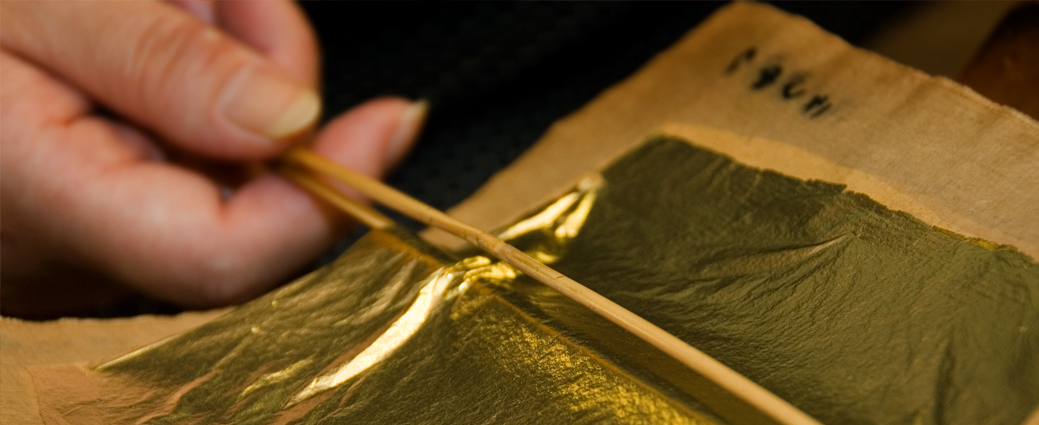Gold Leaf Atelier Visit
Category: Traditional Crafts Tags: arts, crafts, gold, kanazawa, kinpaku
Gold-leaf is made by beating gold into an extremely thin sheet with a thickness of 0.1 to 0.125 millionths of a meter. It is so thin that it will disappear when you rub it with your fingers.
The production of gold leaf started in Kanazawa at the end of the 16th century. The Maeda family, who ruled the Kaga Clan (the present Ishikawa and Toyama areas) in feudal times, invited many artisans to Kanazawa. The city is still known as the city of gold leaf and has preserved and maintained the industry’s techniques and culture.
In Japan, gold leaf is used for handicrafts, such as vessels and ornaments, as well as the decoration of temples, shrines, Buddhist altars, and Buddhist instruments. Gold leaf stores in Kanazawa sell a variety of products, such as tissues using special paper used for the production of gold leaf, cosmetics containing gold leaf, and food containing gold leaf, besides gold leaf handicraft including chinaware, woodenware, ornaments, and accessories.
Kanazawa is full of beauty and art and prides itself on its local arts and crafts. The craft it is probably most well-known for is its gold-leaf production and Kanazawa certainly lives up to its name of the “Town of Gold Leaf”, producing over 99% of Japan’s gold leaf. I was lucky enough to be able to experience this unique craft and immerse myself in this important part of Kanazawa’s culture and history. Gold Leaf Sakuda has a shop attached to its workshop, and it was this that I initially entered before being shown into the workshop. The shop is full of so many beautiful items, which I had a chance to browse later. In the workshop, there were three craftsmen studiously applying the precious gold sheets to various items. I was asked to choose any item I wanted, and each item was clearly displayed with examples and prices. I decided on the glossy black chopsticks as I thought they would look nice with the shiny gold leaf as a contrast. The craftsman showed me how to first roll my chopstick in the gold-leaf and then brush the gold into each crevice, making sure to cover the entirety of the chopsticks. The final, and most nail-biting step, was peeling off the masking tape to reveal my masterpiece. I was very pleased with the final product and I was given a box in which to store my chopsticks. I really enjoyed this experience and I will enjoy eating with these special chopsticks. Read more about my experience HERE
Reviewed by KaranContact us
Tel: 01865 841443
Fax: 01865 841445
Into Japan Specialist Tours
The Dovecote, Manor Farm, Ball Lane, Tackley, OX53AG


